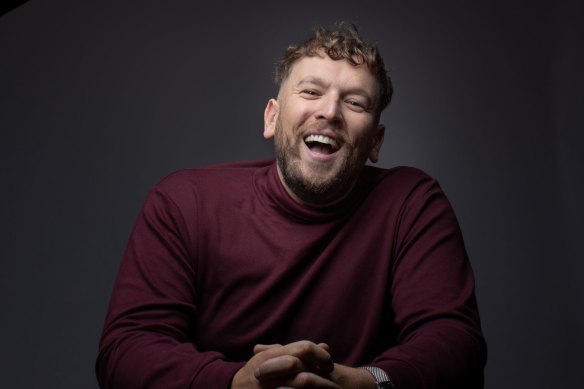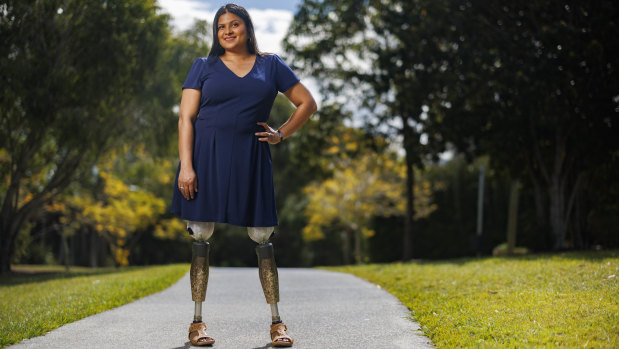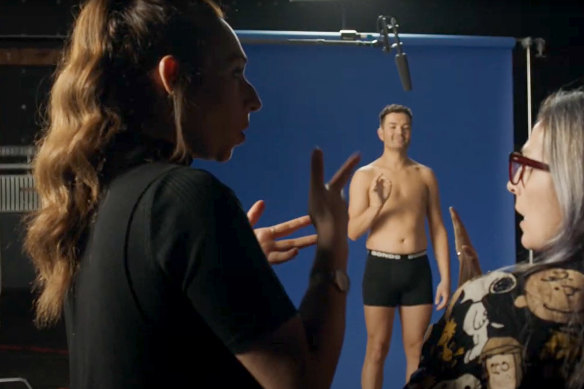Wheelchair kids are Weet-Bix kids: Normalising disability in advertising

Save articles for later
Add articles to your saved list and come back to them any time.
Have you noticed any changes to television commercials for some of Australia’s best-known brands recently?
The Weet-Bix kid, who dreams of scaling Everest, is in a wheelchair. The Bonds model is signing in Auslan. The ANZ employee who tells her colleague to stop speaking in a ridiculous voice is a bilateral above-knee amputee. And the woman answering the phone from AAMI insurance is blind.
If you didn’t notice a thing, Dylan Alcott, former wheelchair tennis champion and Australian of the year, couldn’t be happier.
“We don’t want people to even realise that there’s people with disabilities in the ads, because it is just normal,” says Alcott, who partnered with creative agency Special and some of Australia’s leading brands to replace scenes in current television commercials with ones that have actors with a disability.
“Then they’ll click and they’ll be like, ‘Is the AAMI woman blind? Hang on, can a blind person do that job? Of course they can do that job.’ Kids will be like, ‘I want to be the Weet-Bix kid’ – a young girl in a wheelchair. That’s awesome. See how that representation is so powerful.”
Almost one in five Australians has a disability. But only 1 per cent of ads globally feature a person with a disability, according to the 2021 Kantar Global Monitor, which analyses consumer insights, survey data and trends.
“That sucks,” Alcott says. “One thing I always really struggled with growing up is I never saw or heard anybody like me on TV or radio. When I did, it was often in commercials where someone would drink-drive, have a car accident, and then in the next scene be in tears because they were in a wheelchair and their life was over.”
Alcott approached a number of high-profile brands, which agreed to reshoot existing ads to include a person with a disability. The new scenes also provided opportunities for people with disability to take part in the ads behind the camera.
Dylan AlcottCredit: Simon Schluter
In a 2014 TED Talk that has had more than 4 million views, the late disability advocate Stella Young took aim at society’s habit of turning disabled people into “inspiration porn”.
Instead, Alcott wanted to feature ordinary people with disabilities doing ordinary things – eating breakfast, going to work and wearing undies.
“It’s not an inspirational sob story ad,” he says. “We are often seen in advertising as either broken and less capable or as an inspiration … not us being normal people doing normal things, buying normal products.”
Sara Shams, a disability advocate and speaker who plays an ANZ employee in one of the commercials, believes normalising disability in ads will have a flow-on effect to the rest of society.
Sara Shams is starring in a new ANZ ad aimed at increasing the visibility of people with disabilities.Credit: Glenn Hunt
“Seeing someone like me on TV would have really helped with my self-esteem and also just what I could achieve when I got older,” Shams says.
Actor Nathan Borg says he is proud to be the first deaf model in a Bonds commercial.
He says it’s important for Auslan to be seen in ads because it is usually only used on TV during emergencies or at concerts.
“It finally shows that deaf/hard-of-hearing people can be sexy with Auslan,” Borg says.
Actor Nathan Borg signing in Auslan for a Bonds ad.
On Sunday night, Alcott launched the Shift 20 Initiative with 13 brands – including McDonalds, TikTok, Uber, Pantene and Virgin Australia – that have committed to including more people with a disability in advertising.
“We didn’t want to do a flash in the pan – look how good we are, we’ve done a few ads – and then forget about it,” he says.
“These brands have not just committed to doing the ads at the moment, but joining the Shift 20 initiative, which is a five-year effort to keep increasing representation across all their ads.”
Start the day with a summary of the day’s most important and interesting stories, analysis and insights. Sign up for our Morning Edition newsletter.
Most Viewed in National
From our partners
Source: Read Full Article



